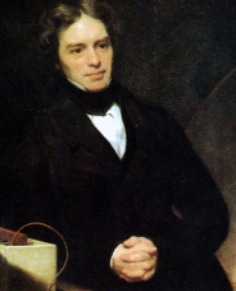When most people think of science, the first name that comes to mind is usually Albert Einstein. But what about Michael Faraday? Faraday was one of the most influential scientists of all time, and his discoveries still affect our world today. Here are 8 captivating facts about this amazing man.
Table of Contents
Michael Faraday Invented the Electric Motor

In 1821, while experimenting with electromagnetism, Michael Faraday made a groundbreaking discovery: he found that he could use electricity to create motion. This discovery led him to invent the first electric motor.
Faraday’s motor worked by using electromagnetic induction to create rotational force. It consisted of a magnet, a coil of wire, and a piece of cardboard. When an electric current was passed through the coil, it created a magnetic field that caused the magnet to rotate. The piece of cardboard prevented the magnet from rotating too far, resulting in continuous rotation.
Faraday’s invention paved the way for future advances in electric motor technology. Today, electric motors are used in everything from fans and power tools to cars and trains.
Michael Faraday Was Born Into Poverty
Michael Faraday was born on September 22, 1791, in Newington Butts, England. His parents were members of the working class and had very little money. As a result, Faraday received limited formal education and was mostly self-taught.
Despite his humble beginnings, Faraday went on to become one of the most celebrated scientists of his time. In 1825, he was appointed as the Director of the Royal Institution, a prestigious scientific organization in London. He held this position for the next 20 years, during which time he made many important discoveries.
Even though he came from a poor background, Faraday’s hard work and determination proved that anyone can achieve greatness if they set their mind to it.
Fridges Were Invented as a Result of an Accident
When experimenting with chloride hydrate inside a tube, he found out that a liquid started to form. He broke the tube open which resulted in an explosion and quickly realized what happened because of his knowledge of electricity from years before!
This discovery led him to develop refrigerators as we know them today – a device used for storing food effectively at low temperatures (below freezing).
The Unit of Capacitance is Named After Faraday
In 1834, Michael Faraday discovered that when a conductor is placed in an electric field, it stores an electrical charge. This discovery led to the development of the capacitor, a device that is used in electronic circuits to store electrical energy. The SI unit of capacitance is named after Faraday: the farad (F).
The farad (F) is the SI unit of capacitance. It is defined as the capacitance of a capacitor that can store 1 coulomb of charge when charged with 1 volt.
Capacitors are used in electronic circuits to store electrical energy. The higher the capacitance of a capacitor, the more electrical energy it can store. The farad is the unit of capacitance that is used to measure the capacitance of a capacitor.
There are many different types of capacitors, each with a different capacitance. Some common capacitors include ceramic capacitors, electrolytic capacitors, and film capacitors.
He Invented Simpler Versions of the Balloons
While many people associate balloon inventors with the Montgolfier brothers, who created the first hot air balloon in 1783, it was actually English scientist Michael Faraday who made the first major breakthrough in balloon design.
The balloons Faraday created in 1824 were not as sophisticated as the ones we have today, but they served the purpose of his experiments. By putting hydrogen inside of the balloon, Faraday was able to observe the power of the gas to lift the balloon into the air. This was a significant discovery at the time, and it laid the groundwork for further research into the power of gases.
Today, we continue to use balloons in a variety of ways, including for recreation, scientific research, and even military purposes. Thanks to Faraday’s early work with balloons, we have a better understanding of how these objects work and can put them to use in a variety of ways.
The Elements Iron and Magnesium Were Named After Faraday
In 1856, Michael Faraday discovered two new elements: iron and magnesium. He named these elements after the Latin words for iron (Ferrum) and magnesium (Magnes), respectively. The symbols Fe and Mg are also derived from these Latin words.
Michael Faraday Was Knighted For His Contributions to Science
Faraday was knighted in 1879 by Queen Victoria for his contributions to science, making him the first scientist to ever receive this honor. Faraday’s work laid the foundation for many important scientific discoveries, and his research helped to advance the fields of electricity and magnetism.
Faraday was also a skilled experimentalist, and he is credited with inventing the electric motor. In addition to his scientific accomplishments, Faraday was also a gifted teacher, and he popularized science through his popular lectures. Despite his many achievements, Faraday remains one of the few scientists to have ever been knighted for his work.
Prince Albert Gifted Him a House
Michael Faraday was one of the most influential scientists of his time. His research in electromagnetism and electrochemistry led to groundbreaking discoveries that paved the way for the modern technologies we rely on today. In 1845, in recognition of his contributions to science, Queen Victoria’s husband, Prince Albert, gifted him a house at Hampton Court.
Faraday lived here until his death on August 25, 1867. The estate was a fitting reward for Faraday’s accomplishments, and it allowed him to live out his life in comfort and luxury. However, it also served as a reminder of the royalty’s esteem for Faraday and his work. Today, the estate is open to the public, and visitors can get a glimpse of the lifestyle that Faraday enjoyed in his later years.
He Suffered from Memory Loss
Faraday was an incredible scientist who made groundbreaking discoveries in the field of electromagnetism. However, Faraday suffered from memory loss at the age of 47, which made it difficult for him to remember his own experiments. He couldn’t work for three years because of the symptoms like unsteadiness and vertigo.
In one instance, Faraday forgot how he had made a particular discovery and had to replicate the experiment in order to remember the results.
His memory loss did not prevent him from making significant contributions to science. In fact, many of Faraday’s experiments were so innovative that they are still used by scientists today. Despite his memory loss, Faraday was a brilliant scientist who left a lasting legacy.
Conclusion
Michael Faraday’s discoveries and inventions still play an important role in our world today. From electric motors to refrigerators, his legacy continues to impact our lives in many ways. The next time you flip on a light switch or turn on your refrigerator, remember the man who made it all possible!





